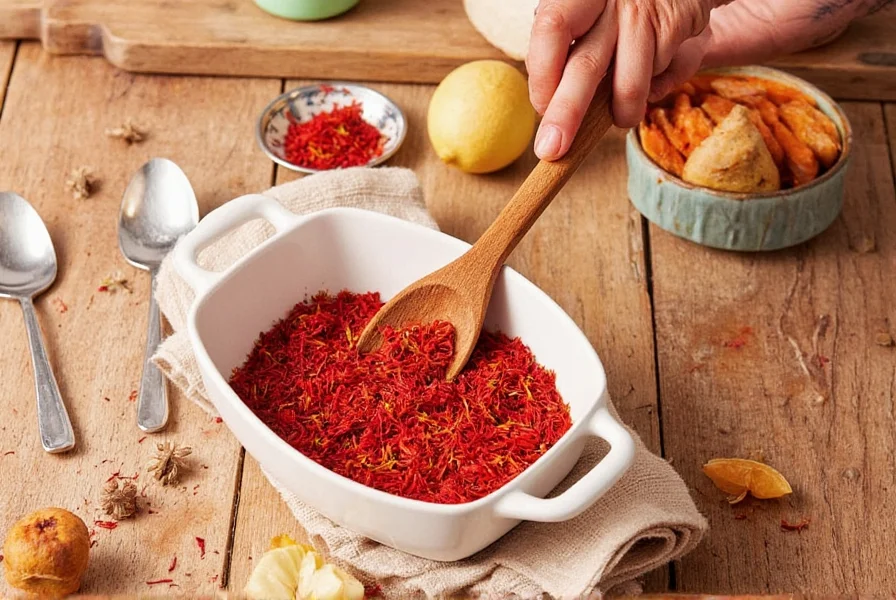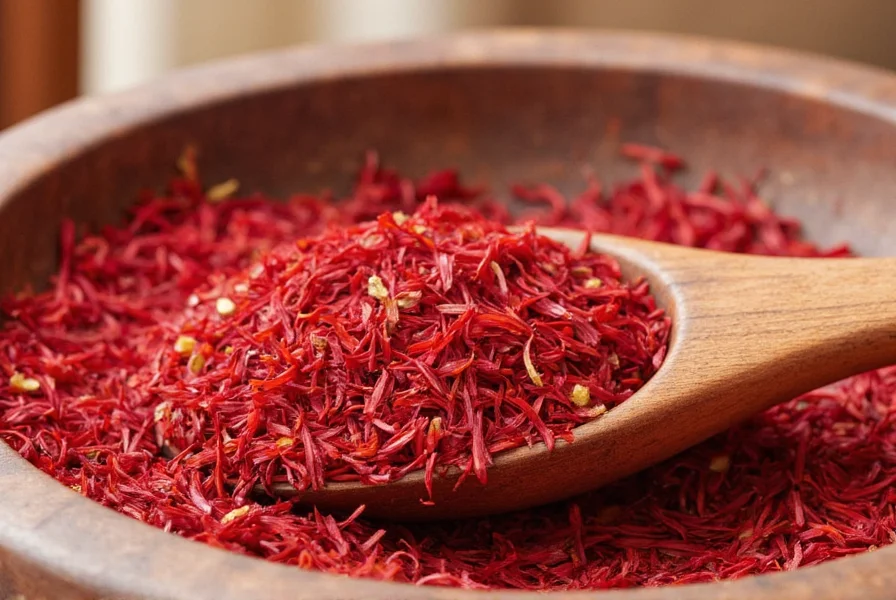Saffron's exquisite flavor and vibrant color have made it a prized ingredient in kitchens worldwide for centuries. Harvested by hand from the delicate crocus sativus flower, each thread represents significant labor—approximately 75,000 flowers yield just one pound of saffron. This meticulous harvesting process explains its premium price, but understanding proper usage ensures you maximize this precious spice's potential in your cooking.
The Science Behind Saffron's Value
Understanding why saffron commands such a high price helps home cooks use it more effectively. Each crocus flower produces only three stigmas, which must be hand-picked at dawn when the flowers are still closed. The harvesting season lasts merely two to three weeks each autumn, requiring thousands of flowers for just one ounce of dried saffron. When evaluating saffron for your saffron-infused recipes, look for deep red threads with minimal yellow styles—these indicate higher concentrations of crocin (responsible for color) and safranal (providing aroma).
| Saffron Quality Indicator | High Quality | Lower Quality |
|---|---|---|
| Color | Deep, uniform red | Faded or with excessive yellow |
| Aroma | Strong honey-like fragrance | Musty or weak scent |
| Texture | Dry but pliable threads | Brittle or dusty |
| Color Release | Rich golden hue in warm liquid | Pale yellow or uneven coloring |
Mastering Saffron Preparation Techniques
The key to unlocking saffron's full potential in traditional saffron dishes lies in proper preparation. Never add dry threads directly to recipes—this wastes their flavor and color. Instead, follow these professional techniques used in authentic saffron spice recipes:
The Steeping Method: Place 15-20 threads in a small bowl with 2-3 tablespoons of warm (not boiling) liquid—broth for savory dishes, milk for desserts. Cover and let steep for 15-20 minutes. This gentle process extracts maximum flavor compounds without damaging delicate aromatics. The resulting golden liquid then gets added to your dish.
Grinding Approach: For recipes requiring intense color, grind soaked threads with a pinch of sugar using a mortar and pestle. The sugar prevents threads from sticking while helping release essential oils. This technique works particularly well for Spanish paella saffron recipes where vibrant color is essential.

Classic Saffron Dishes Worth Mastering
Exploring traditional saffron recipes connects you with culinary heritage while showcasing the spice's versatility. These authentic preparations demonstrate why saffron has remained prized across cultures:
Spanish Paella Valenciana
The iconic rice dish where saffron plays a starring role. Authentic paella saffron recipes use bomba rice, which absorbs the saffron-infused broth while maintaining firm texture. Key technique: Add the steeped saffron liquid during the initial broth incorporation, not at the end. This allows the rice grains to absorb the color and flavor throughout cooking.
Persian Tahdig with Saffron
This celebrated Persian rice crust gets its golden color and distinctive flavor from saffron. The secret to perfect saffron-infused tahdig involves mixing steeped saffron with yogurt before adding to the rice. As the rice cooks, the bottom layer transforms into a delicate, crispy crust that's considered the most prized portion of the meal.
Italian Risotto alla Milanese
Originating in Milan, this luxurious risotto showcases saffron's ability to elevate simple ingredients. Traditional saffron recipes for risotto require adding the steeped saffron during the toasting phase of the rice, allowing maximum flavor absorption. The result is a creamy, golden-hued dish often served alongside ossobuco.
Innovative Saffron Applications
While traditional saffron dishes remain beloved, modern chefs continue discovering creative saffron spice recipes that showcase its versatility beyond conventional applications:
Saffron-Infused Desserts: From Persian saffron ice cream to French saffron crème brûlée, the spice's floral notes complement sweet preparations beautifully. When developing saffron dessert recipes, pair it with complementary flavors like orange blossom water, rosewater, or cardamom for Middle Eastern-inspired treats.
Unexpected Savory Uses: Contemporary saffron recipes increasingly feature the spice in unexpected places—saffron-infused olive oil for dipping bread, saffron-marinated seafood, or even in tomato-based sauces where it enhances umami notes. Scandinavian bakers have long used saffron in their Lussekatter (saffron buns), proving its compatibility with sweet yeast doughs.
Troubleshooting Common Saffron Issues
Even experienced cooks encounter challenges with this delicate spice. Understanding these common problems helps perfect your saffron spice recipes:
Insufficient Coloring: If your saffron isn't producing that signature golden hue, you're likely using inadequate quantities or improper preparation. Remember that heat degrades saffron's coloring compounds—always steep in warm (160°F/70°C), not hot liquid. For stronger color, try grinding the threads after steeping.
Weak Flavor: Saffron's flavor compounds are volatile. If your saffron-infused dishes lack aroma, your spice may be old or improperly stored. Saffron maintains peak flavor for 6-12 months when stored in an airtight container away from light and moisture. Purchase smaller quantities more frequently rather than large batches that lose potency.
Substitution Guidance: While no substitute perfectly replicates saffron, turmeric provides color (but not flavor) in a pinch. For authentic saffron recipes, however, the unique flavor profile is irreplaceable. When budget constraints limit saffron use, focus on dishes where it's the star ingredient rather than trying to incorporate it into every recipe.
Frequently Asked Questions
How many saffron threads equal 1/4 teaspoon?
Approximately 20-25 saffron threads equal 1/4 teaspoon of powdered saffron. However, for optimal results in saffron spice recipes, always use threads rather than powder, as threads maintain freshness longer and allow for proper steeping to extract maximum flavor and color.
Can I use saffron powder instead of threads in recipes?
While saffron powder offers convenience, threads are preferable for authentic saffron dishes. Powder often contains fillers and loses potency faster. If using powder, reduce the quantity by half since it's more concentrated, but expect less vibrant color and potentially altered flavor in your saffron-infused recipes.
Why does my saffron rice lack golden color?
Insufficient color typically results from improper preparation. Always steep threads in warm liquid for 15-20 minutes before adding to rice dishes. Using boiling water degrades coloring compounds, while insufficient steeping time prevents full extraction. For traditional saffron recipes like paella, ensure you're using enough threads—typically 15-20 for four servings.
How should I store saffron to maintain freshness?
Store saffron threads in an airtight container away from light, heat, and moisture. A small dark glass jar in your pantry works best. Properly stored, saffron maintains peak quality for 6-12 months. Never store in the refrigerator where moisture can degrade quality—this is crucial for preserving the integrity of your saffron spice recipes.
What are the best dishes to showcase saffron's flavor?
Dishes where saffron can shine as a primary flavor work best for authentic saffron recipes. Spanish paella, Italian risotto alla Milanese, Persian tahdig, and Swedish saffron buns all highlight the spice's unique characteristics. Avoid overpowering saffron with strong competing flavors—its delicate floral notes work best with complementary ingredients like seafood, chicken, rice, and mild cheeses.











 浙公网安备
33010002000092号
浙公网安备
33010002000092号 浙B2-20120091-4
浙B2-20120091-4